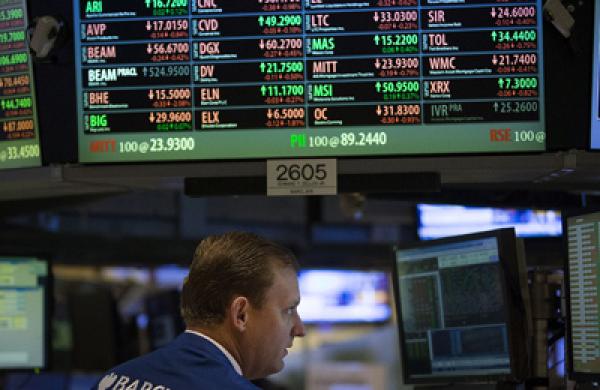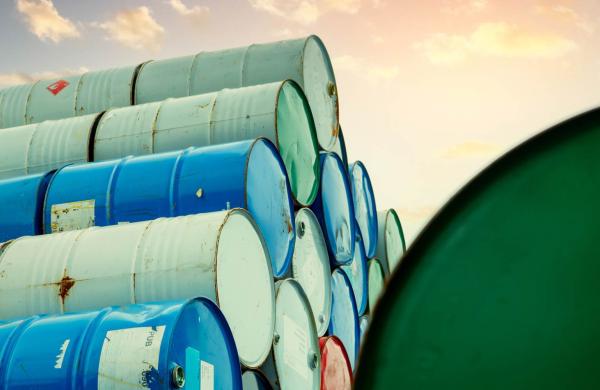When China Huarong Asset Management Corp. trumpeted its historic agreement to sell $1.3 billion of bad Chinese bank loans to a consortium of investment firms led by Morgan Stanley, it appeared to be a major coup for Huarong, for Morgan Stanley -- and for Beijing.
One of four firms created by China to hack away at the country's thicket of overdue bank loans -- nearly $750 billion worth -- Huarong purportedly was able to unload the nonperforming commercial credits at 8 cents cash on the dollar plus a slice of the money recovered. In turn, the Chinese company was to help collect on the loans as a local joint venture partner of Morgan Stanley and its co-investors, Lehman Brothers, Salomon Smith Barney and Hong Kong offshore distressed-debt fund KTH Capital Management.
The announced sale of a portfolio of bad loans was without precedent in China, and both foreign investors and Chinese officials hoped that it would inspire many more such deals to help clean up the colossal debt mess. Indeed, the following month Goldman, Sachs & Co. revealed that it had agreed to purchase $238 million of loans from Huarong in a similar joint venture.
But all that was back in late 2001, and not until this March did Beijing get around to approving the Goldman and Morgan Stanley deals, which got bogged down in China's notorious bureaucracy. Sign-offs were needed from the Ministry of Finance, the Ministry of Foreign Trade and Economic Cooperation, the People's Bank of China, the State Administration of Foreign Exchange Control, the State Administration of Taxation and the State Administration of Industry and Commerce. "Each department needed two or three months," sighs Wang Wen Jie, general manager of the international business department at Huarong. "So it took over a year."
China can ill afford to take such a leisurely approach to authorizing loan sales. In theory, the Morgan Stanley and Goldman deals now provide a regulatory template for Beijing to approve similar transactions more expeditiously. However, much will depend upon Chinese bureaucrats' often changeable attitudes toward foreign investors and bad loans.
Standard & Poor's pegs China's nonperforming bank loans at more than half of the country's $1.3 trillion GDP. To put that in perspective, the long-suffering Japanese banks' nonperforming loans equal about 10 percent of that country's GDP. Beijing itself estimates that China's bad loans add up to only about $375 billion, but that would still mean that one out of every four bank loans is significantly late. (Beijing defines any loan whose interest or principal payment is at least 90 days late as nonperforming.)
Because China relies on bank loans to grow and create jobs, the country's mountain of bad debt poses huge risks for development. "The banks must deal with their nonperforming loans quickly," says Ryan Tsang, a financial services ratings analyst at S&P in Hong Kong. "Otherwise, depositors will start worrying about their money. It is important to maintain public confidence." Individual Chinese depositors, who hold some $1 trillion in bank savings accounts, provide critical liquidity. A financial panic caused by bad loans' threatening banks' solvency would be a "nightmare," says Arthur Lau, director of financial institutions at Fitch Ratings' Hong Kong office.
Four years ago the People's Bank of China extracted $171 billion of bad loans from the Big Four banks -- Agricultural Bank of China, Bank of China, China Construction Bank and Industrial and Commercial Bank of China -- and shifted them to four special-purpose "asset management" companies, one for each bank. Huarong is handling $49 billion of distressed loans for ICBC, China's largest commercial bank (assets: $480 billion). In all, the Big Four account for 70 percent of all Chinese bank loans.
The loan liquidators, however, are in no apparent rush. By the end of this year's first quarter, the four asset management companies had disposed of only $41 billion of the nonperforming loans. Some $8.7 billion, or roughly 20 percent, was recovered in cash, and the remainder was either written off or restructured.
Says S&P's Tsang, "The recovery ratio is still quite low, and yet we wonder whether they have dealt with the more marketable assets up front and will deal with the more difficult assets later."
At this rate, estimates Qu Hongbin, China economist at HSBC, it will take at least a decade of disciplined effort for China to pare its nonperforming-loan ratio from well over 20 percent to 10 percent. Although extremely high by Western standards, that would be in line with the ratios of other Asian countries. Along with permitting loan sales, Beijing is encouraging local banks to write down bad debts using their surpluses, and the government may also recapitalize banks so that they can dispose of further debt.
Foreign bankers are critical to the loan recovery process. Their overriding interest, of course, is to make a tidy profit by collecting on as much of the debt as they can. Tim Grady, Tokyo-based executive director of Morgan Stanley Real Estate Funds, the unit that put together the Huarong agreement, emphasizes that the deal wasn't an attempt to curry favor with Beijing. "The numbers stand on their own," he says. Huarong projects a 21 percent recovery rate.
For Beijing, the primary goal is to achieve high loan recovery rates by capitalizing on foreign firms' clear-eyed profit motive and substantial distressed-debt experience. Morgan Stanley alone has done more than 200 Asian nonperforming-loan transactions involving credits with a combined book value of $90 billion. But Chinese bureaucrats would also like the bad-loan recovery to become a catalyst for tightening lending standards and debt collection. Says S&P's Tsang, "They want to use the foreign players to get liquidity and to learn some tricks."
That said, collecting on many of the loans may make the government approval process seem speedy. ICBC makes many so-called policy loans to state enterprises and to public projects, at Bejing's bidding. These notoriously poor credits -- as of last year one quarter of ICBC's loans were nonperforming -- often have little incentive to repay and tend to wield their political clout to get away with it. Most of the loans in the Morgan StanleyHuarong portfolio have been nonperforming for four or more years.
What's more, loan documentation is skimpy and collateral poor. Subject to local business and political pressures, court verdicts in debt disputes are, to put it politely, unpredictable. "In provincial courts we are often surprised by the judgments," says Janice Lee, a partner at Hong Kong law firm Koo and Partners, which has considerable experience dealing with bad debts in China. "Sometimes it is because the company is influential or a government company. We can easily see that the ruling is biased."
Whatever their motives, Chinese judges have lots of leeway on debt matters. A lawyer who has worked with distressed debt in China reports that courts may rule against a creditor even when there's collateral if that collateral wasn't formally registered with the government.
Foreign joint ventures will wade into the court system with reluctance. "First, you apply pressure," says Han Jiaping, a manager at state debt collector CreditCN, which started as a credit investigation unit within the Ministry of Foreign Trade and Economic Cooperation in 1987. "Court is the last option." Further complicating debt recovery is the fact that it's politically unpopular. That's especially true when a foreign entity is the collector or if jobs are at stake.
Some rivals doubt that the Morgan Stanley group can make a fair profit on its investment. "Think about it," says an investor in distressed Asian assets. "You have to figure out the Chinese loan documents, and then you have to think about foreclosure. You have to forge paths into unknown territory."
Still, the Morgan Stanley joint venture has advantages over China's banks in recouping lost loans. For one thing, it doesn't face the same conflicts of interest from political and business ties. "Foreign institutions are not doing this to help with China's four modernizations," notes HSBC's Qu, referring to the government's longtime goal of upgrading agriculture, industry, technology and defense. Even the Chinese asset managers seem ill-equipped to wrangle over overdue debt. S&P's director of financial services ratings, Terry Chan, says that because most of their staff comes from the banks, "quasibureaucrats are being asked to become quasientrepreneurs."
The Morgan Stanley joint venture principals are convinced that they can wring a profit from the loans. They point to the double-digit returns of leading Asian distressed-debt vehicles, like Hong Kongbased ADM Capital's Galleus Fund, which has gained 18 percent a year on average since its inception in 1999. Moreover, the earliest batches of portfolio sales yield the best returns, says Jack Rodman, managing director of Ernst & Young Asia Pacific Financial Solutions, financial adviser to Huarong. And the Chinese asset manager has its own capitalist agenda: It stands to reap significant extra cash as Morgan Stanley collects on the debts.
Established debt-rescue techniques can improve the odds of recovery. "The foreign investor can add value by helping in restructuring the debts or improving the management of the operations," says Robert Caldwell, a Hong Kongbased attorney for London law firm Clifford Chance. "Through restructuring there might be better value than through breakup." Caldwell, who speaks Mandarin, has advised on major bankruptcies and debt reschedulings involving Chinese companies.
Foreign ventures can work with borrowers to cut costs, bolster balance sheets and boost cash flow. They can also extend maturities and lower rates to squeeze out still more money. And because firms like Morgan Stanley and Goldman have databases and software that Chinese companies lack, they can quickly detect changing repayment patterns and other portfolio shifts.
Morgan Stanley and its partners are not blind to the political repercussions of foreigners' buying Chinese companies' loans at steep discounts and then pushing for layoffs and other painful remedies so that the companies can repay the debts. "Many countries have concerns about foreigners acquiring their assets at levels that are viewed by some as being advantageous," concedes Grady. "China is no different."
Seizing assets and enforcing repayment terms, moreover, are untried concepts in Chinese courts. "There is a legal system," says Grady, "but there is not enough precedent to rely upon it." As Yi Zhang, a partner at Los Angelesbased O'Melveny & Myers, an adviser on the Morgan Stanley deal, explains: "China's foreign investment laws have been well developed over the past 20 years, but they are designed for garden-variety manufacturing." Authorities have never before permitted the use of debt as capital. "To view a nonperforming loan as an asset is new in China," says Zhang.
Beijing is anxious to see China's banking system freed from its bad-debt burden. That is probably the best guarantee Morgan Stanley, Goldman and other foreign firms have that their loan collection efforts will pay off: The government needs to ensure that borrowers make good on at least a portion of their debts and that the legal system gives foreign creditors a fair hearing.
But don't expect a torrent of debt sales. Says E&Y's Rodman of the nominal precedents set by the Morgan Stanley and Goldman deals, "I don't know if we built a highway on which a convoy of trucks laden with nonperforming loans can roll or if we just clawed our way to the top" of a mountain of red tape. Nevertheless, Morgan Stanley announced in June that it had signed an agreement with China Construction Bank to assist in disposing of $420 million in bad loans, and other foreign firms are said to be negotiating deals of their own.





